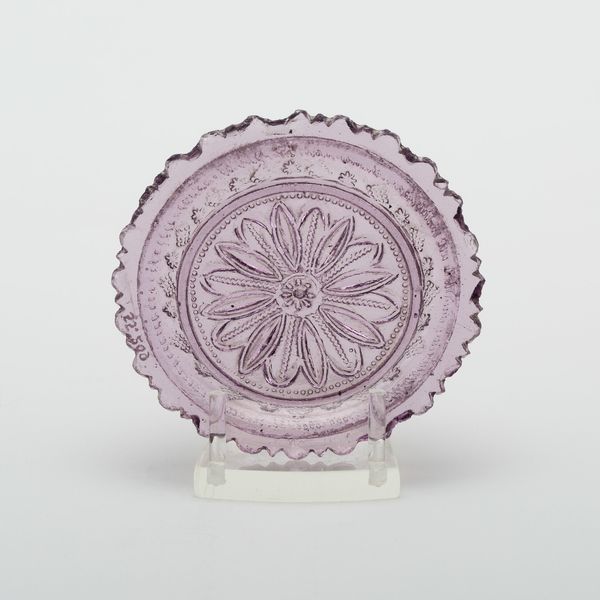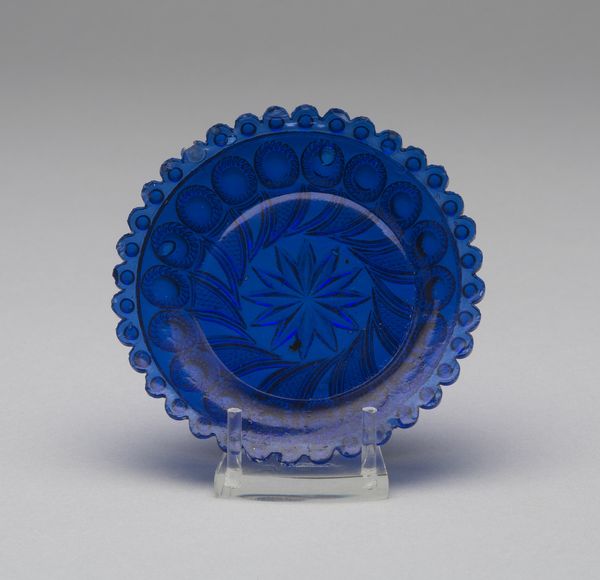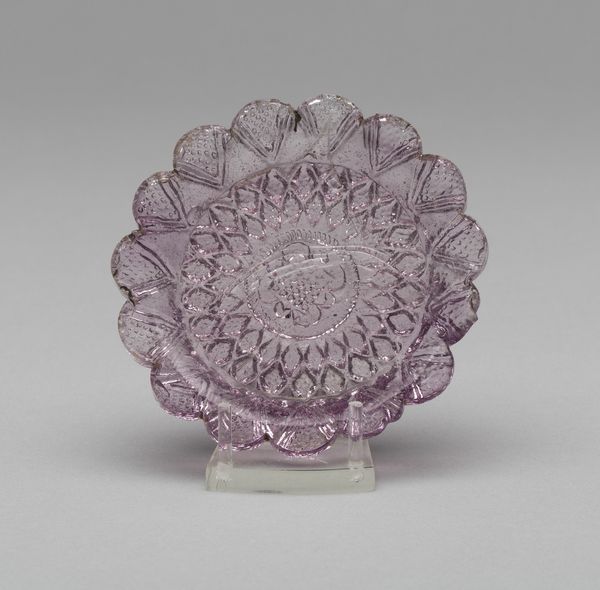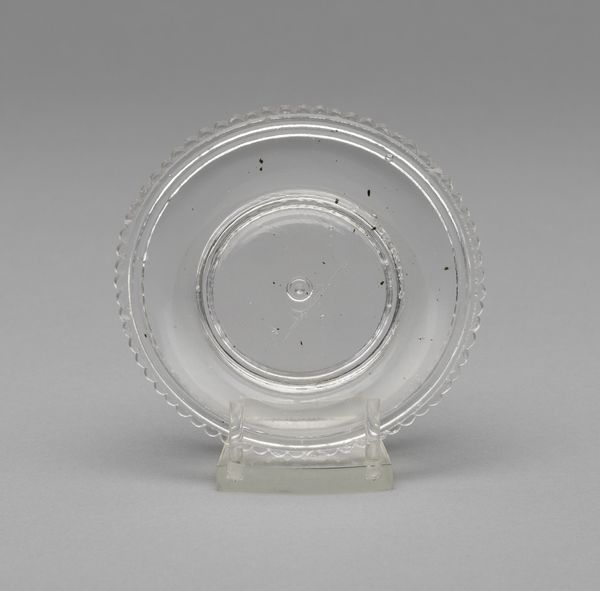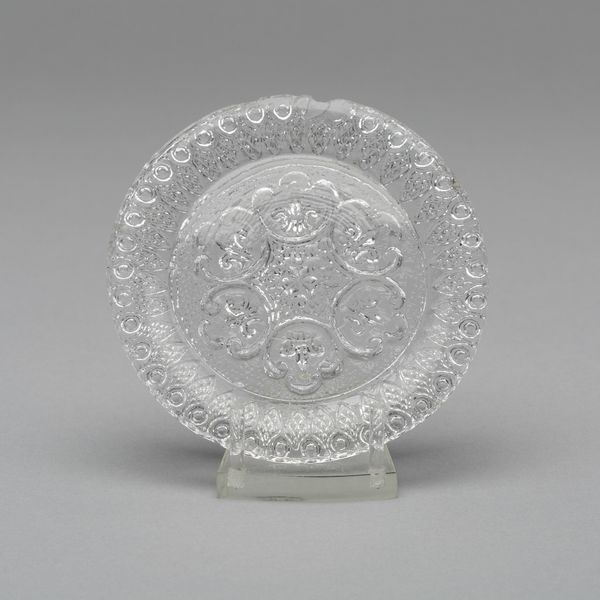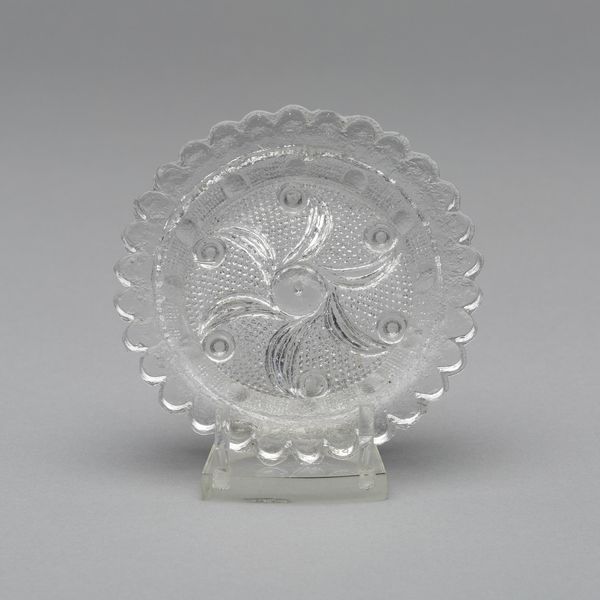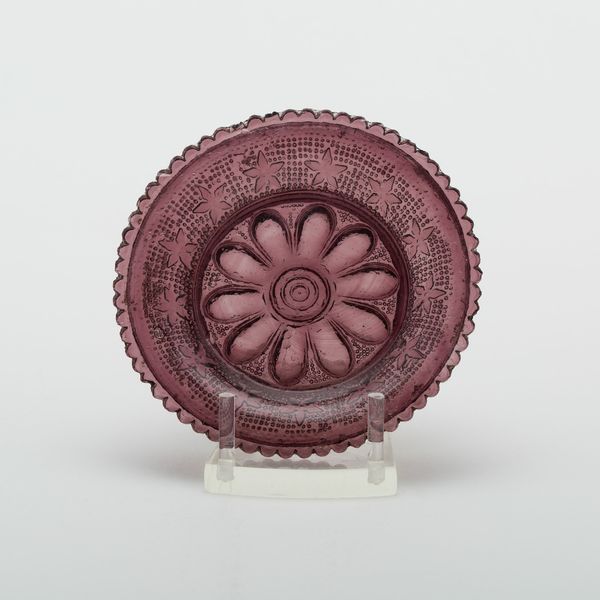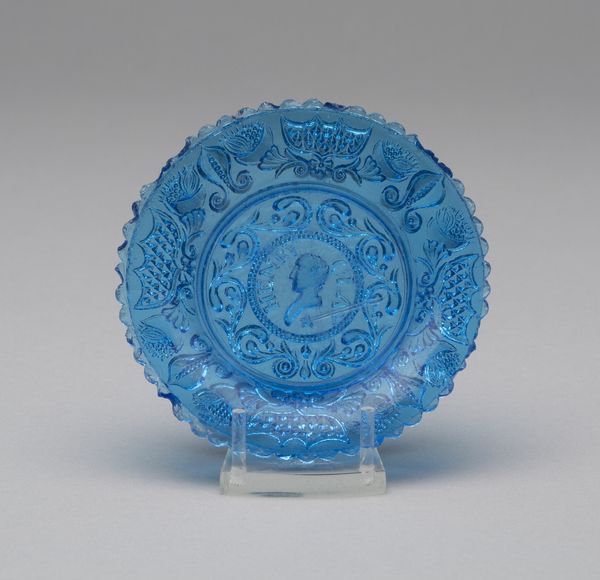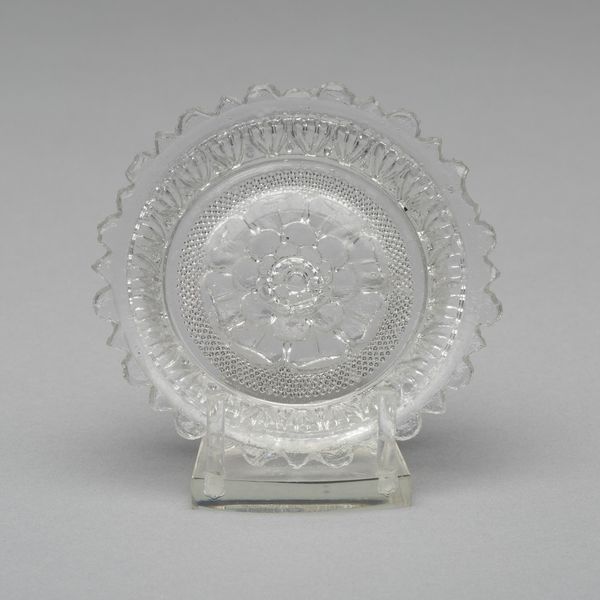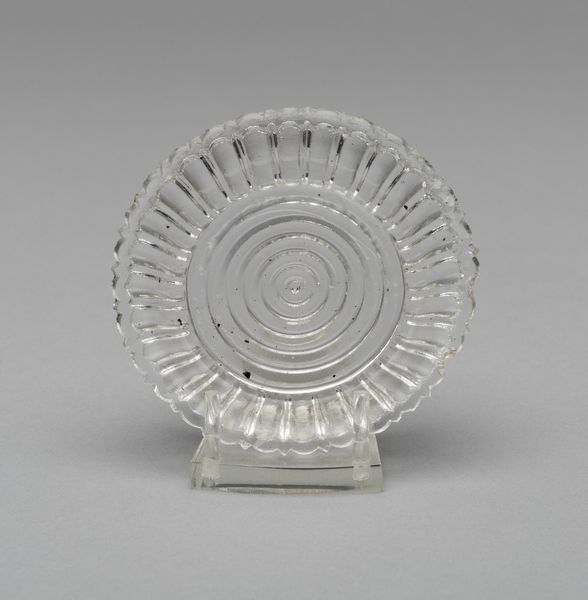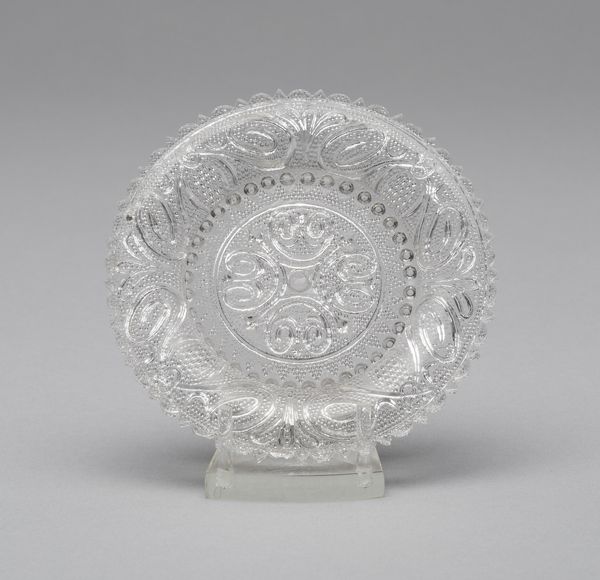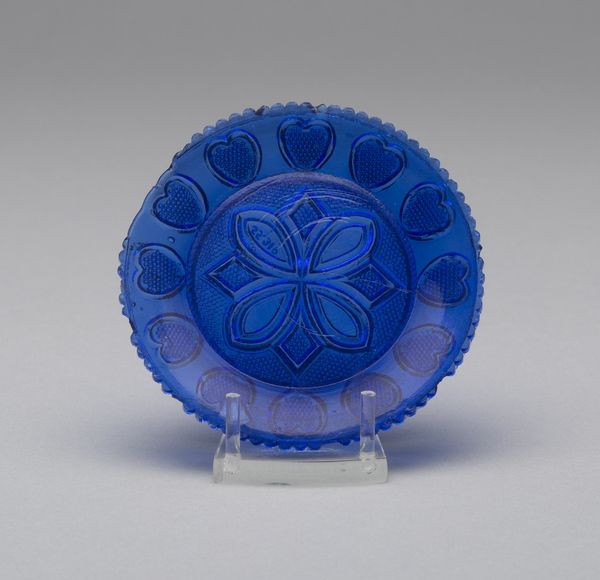
glass
#
neoclassicism
#
glass
#
decorative-art
Dimensions: diam. 7.6 cm (3 in.)
Copyright: Public Domain
Editor: Here we have a delicate purple glass cup plate, dating from the 1830s or 40s. It's an anonymous work from the decorative arts tradition, and something about its fragility makes me think about the domestic lives of women. What stories do you think it can tell? Curator: Well, this unassuming object is more than just a pretty piece of glass; it speaks volumes about class, labor, and the subtle ways in which power dynamics manifest in the everyday. Think about the hands that produced it, likely exploited labor. The purple hue itself came at a price. What kind of social aspirations did this object embody? Editor: It’s true, the glass does look expensive for the time. It has cracks and imperfections in the glass itself though, so do you think it's meant for the upper class or working class? Curator: That's a great observation! Those imperfections tell a different story, don't they? Perhaps it was aspirational. Meant to *look* expensive, suggesting upward mobility in a rapidly changing society. Maybe owned by someone on the cusp of social change, trying to navigate a world of increasing class consciousness. It prompts questions about access, aspiration, and the performance of identity through material objects. What do you think about the fact that we don't know who created it? Editor: It definitely reflects how much we value artworks based on attribution. It's so commonplace to give value only to "important" artwork, while functional designs are often cast to the side, or as lesser works. We can apply the same thinking about anonymity to craftwork made by women in those same years. The cup plate's real purpose feels different now. Curator: Exactly! It reminds us to critically examine what we value and why, and whose stories get told—and whose don’t—in the grand narrative of art history. It challenges the established canon, prompting us to consider the contributions of those whose names have been erased or forgotten. Editor: That's fascinating. I’ll never look at a little glass plate the same way again. Curator: Nor will I.
Comments
No comments
Be the first to comment and join the conversation on the ultimate creative platform.

